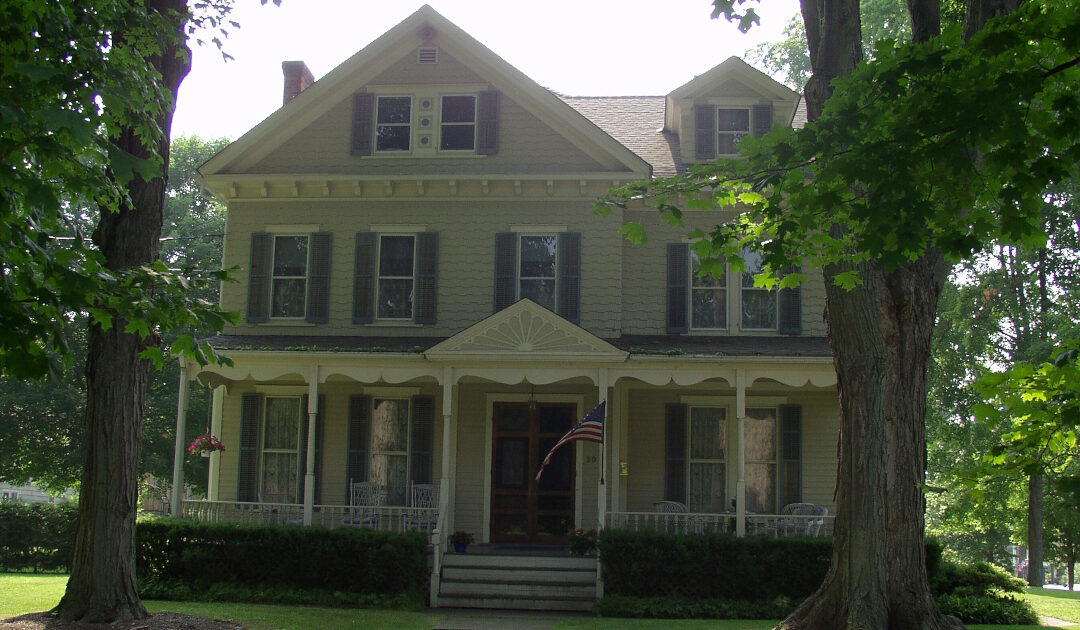Every generator installation different because every home is different. The best location for your new standby generator puts emphasis on safety first, followed by a balance between installation costs and aesthetics.
Standby Generator Placement Codes: Why Location Matters
Selecting a location for the placement of your standby generator prior to installation is an important step. Your local building department will scrutinize the location to make sure it meets all local codes. Proper placement ensures safety, optimal performance, and longevity.
A generator manufacturer might specify a minimum distance from the house, but the local code or specific features of your home may require a greater distance.
Standby generator manufacturers provide guidelines and minimums. Your local building and code-enforcement department has the authority (often called the Authority Having Jurisdiction or AHJ) regarding all aspects of your generator installation. Choosing a generator installer with experience in your community makes the process smoother for you as a homeowner because they know the local codes and what the inspectors want from a new standby generator installation.
Home generator installation is not a DIY project unless you have extensive experience with home electrical systems and plumbing. Choosing your generator location is just one aspect of the installation process and an important step to a safe and successful home generator installation.
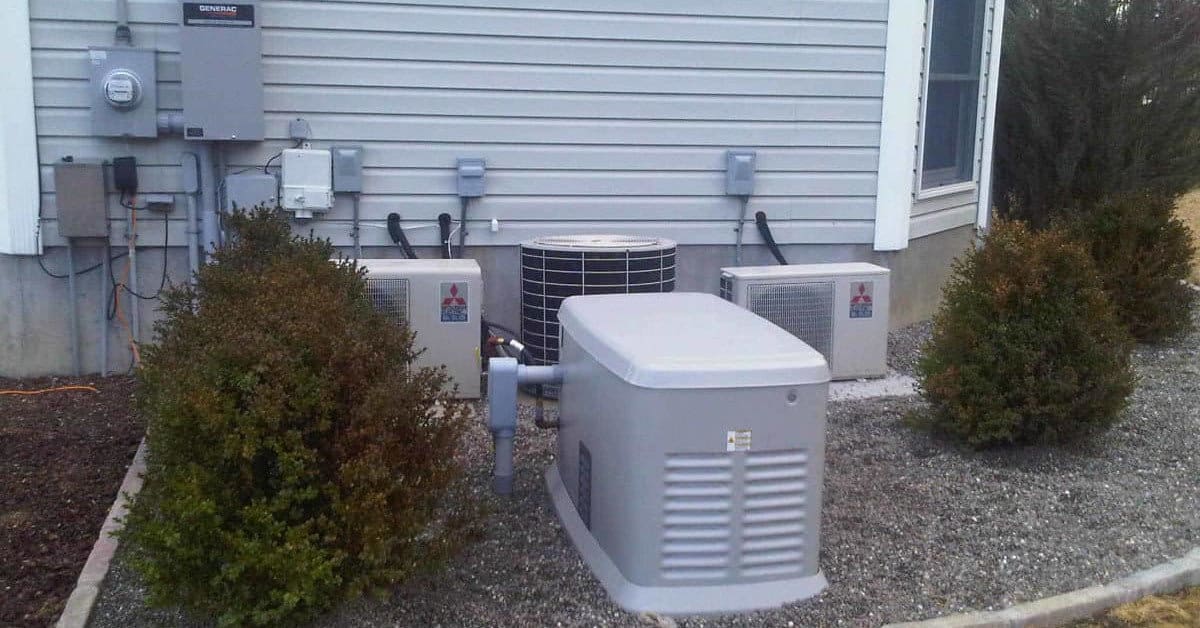
How Far Does a Generator Need to be From the House?
When considering the installation of a standby generator, keep safety and efficiency at the forefront of your decision-making. One of the most commonly asked questions asks about the minimum safe distance between the generator and the house.
The minimum safe distance for some generators may be as little as eighteen inches, but always consult the local authority having jurisdiction. Typically, building codes and manufacturers recommend a minimum distance of 5 feet from any structure, including your home. This guideline ensures that there’s enough space around the generator for heat dissipation and prevents potential fire hazards.
Distance from windows, doors, and vents is crucial. Building codes stipulate that generators must be at least 5 to 10 feet away from these openings to prevent carbon monoxide, a deadly gas found in the exhaust of internal combustion engines, from entering living spaces. Exhaust direction is also important and should be pointed away from any openings.
Besides safety considerations, think about noise levels. Placing the generator closer to the home might be convenient for wiring and fuel line placement or use less space in the yard, but doing so might increase the noise heard inside the house.
The manufacturer guidelines and recommendations help determine the minimum space from the home—always consult your local building codes and the code enforcement department. Specific requirements vary based on local regulations and the design of the generator.
Remember: Your local building code enforcement department and the inspectors that work there place your safety and the safety of those that may own your home in the future above other considerations like cost and the impact on your landscaping. Safety First.
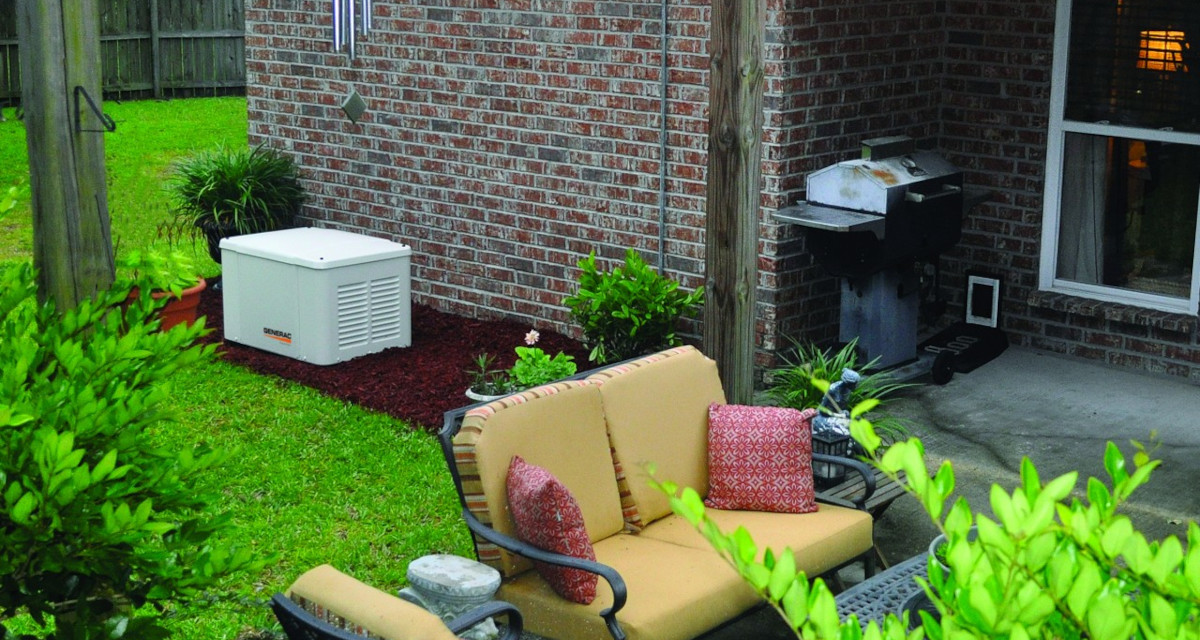
Where Should a Whole House Generator be Located?
A suitable location for a whole house generator is one that ensures the safety of your household, allows for efficient operation, and doesn’t affect the longevity of the generator. Use the following considerations as a guide to determine the most suitable location:
Safety Precautions: Always prioritize safety by placing the generator at least 5-feet away from windows, doors, and ventilation openings to prevent exhaust emissions—including carbon monoxide—from entering the home. Install a Carbon Monoxide Detector on every floor of your home, especially near sleeping areas.
Ease of Access: Regular maintenance is required by the generator’s warranty, and it keeps performance optimal. Choose a location that offers easy access for routine checks, maintenance, and unexpected repairs. Follow the clearances specified by the manufacturer to ensure that service personnel can easily access the generator.
Elevated Ground: Choose a location where water does not pool. If your area is prone to flooding, consider an elevated stand for the generator. Once a generator floods, you’ll have to replace it at your own cost. Flood damage is not covered by warranty. Elevated ground or ground that slopes away from the generator is a good choice.
Fuel Source: Position the generator as close to its fuel source as possible, whether that is municipal natural gas or your own propane storage sank. This minimizes the length of fuel lines required, which is more efficient and cost-effective.
Consider Noise: Home standby generators have become quieter over the years, but they still produce some noise. How will the noise impact your household or neighbors? Strategic placement or the use of barriers incorporated into the landscaping can help reduce the impact of noise on you and your neighbors.
Ventilation Needs: Generators need ample ventilation to avoid overheating. Choose a spot that doesn’t restrict airflow. Avoid deep corners or any type of alcove, or any overhang.
The ideal standby generator location puts safety first while considering practicality and cost. Before finalizing a location, check with the local building and code department and consult with your installer. Then choose the location based on your property’s unique layout and conditions.
Present a whole house generator installation plan to your local building and code enforcement department for approval before you start the project or order materials.
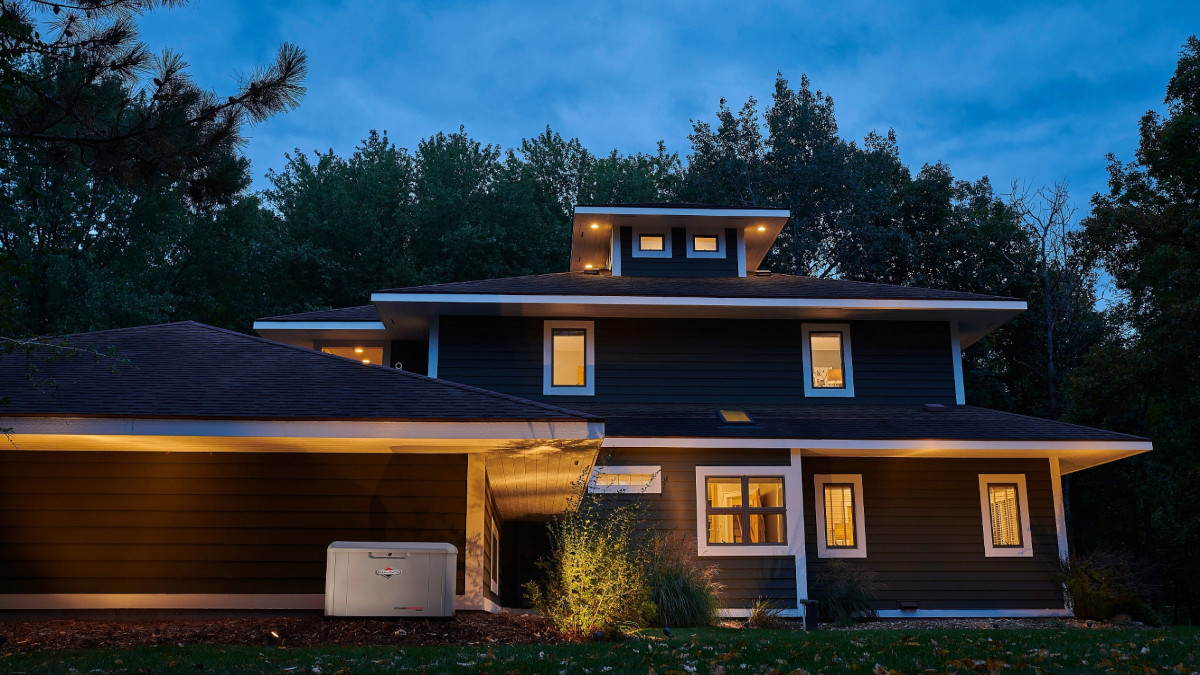
Reduce noise and enhance aesthetics
Standby generators produce noise, typically comparable to a central air conditioner. Strategic standby generator placement and some additional modifications can lower the noise that makes its way into the house or over to the neighbors. Consider placing your generator behind a barrier or a fence, which will not only muffle the sound, but may also enhance the appearance of your outdoor space. Landscaping with shrubs or plants can further dampen the noise while also concealing the generator. When choosing barriers or plants, always ensure they do not impede airflow around the generator. Don’t place plants in the generator exhaust—the heat will kill them and create a fire hazard.
How far does a generator need to be from a window?
The proximity of a generator to windows, doors, and other openings is not only a matter of noise concerns but also a significant safety issue. Carbon monoxide, a colorless, odorless, and deadly gas, is emitted from generators. A generator positioned too close to windows or any openings introduces the risk of exhaust emissions entering the house and posing a severe health risk to occupants.
To mitigate this risk, building codes and manufacturers recommend a minimum distance of 5 feet from windows, doors, and other openings. Some guidelines might require more extensive distances depending on the generator size and model. However, a simple rule of thumb is the farther the better, especially concerning openings that could allow carbon monoxide to enter living spaces.
Beyond safety, placing the generator further from windows can also minimize noise disturbances inside the home. When planning the placement, always consult the manufacturer’s guidelines and local building codes to determine the safe and recommended distances from windows and other openings, then check with the building code enforcement department for their concerns.
By ensuring a safe distance from windows and other possible entry points, you’re not just preserving the comfort of your home but also protecting the health and safety of its inhabitants.
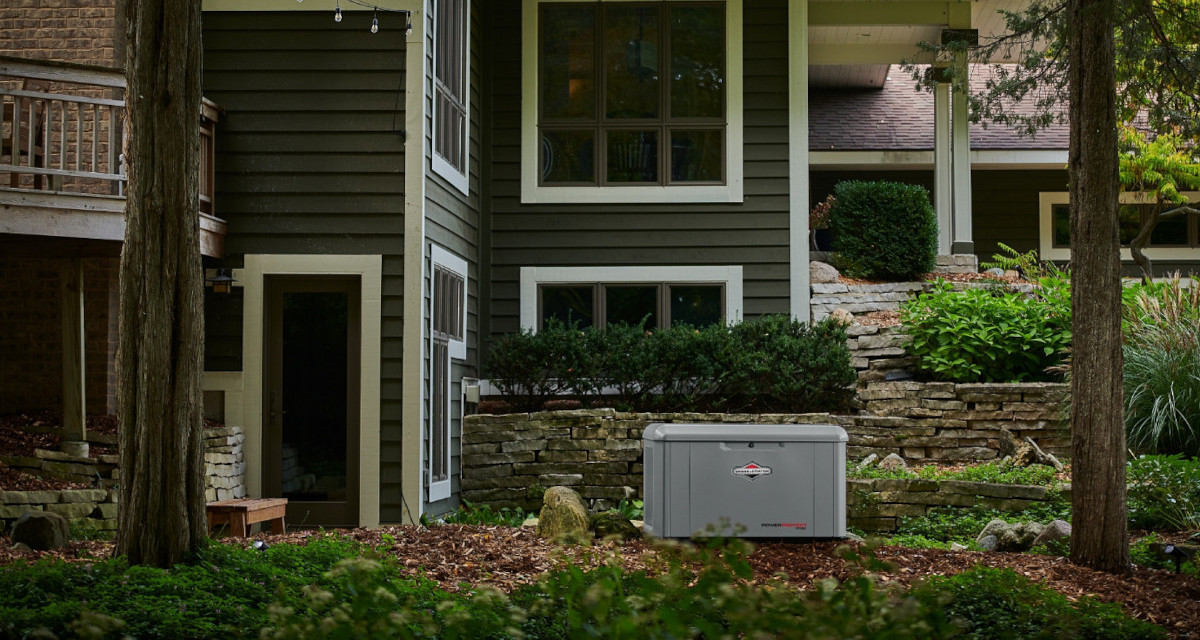
Standby Generator Placement for Proper Airflow
Generators produce heat during operation, making adequate airflow essential. Proper ventilation prevents overheating, which can damage the generator and reduce its lifespan. Furthermore, a well-ventilated area allows toxic exhaust fumes to dissipate, preventing their buildup, which could be hazardous. To maintain optimal airflow, make sure there are no obstructions or debris around the generator. Regularly inspect the area to ensure the vents and exhaust systems are free from blockages.
Whole House Generator Placement on the Gound or Concrete
Some manufacturers allow generator installation directly on the ground after leveling a site. However, a concrete pad provides a number of advantages. It ensures that the generator remains level, which is essential for its operation and longevity. The pad also protects the generator from direct contact with soil and reduces the chance of corrosion. Extreme weather can loosen soil, especially in heavy rain. A concrete pad offers stability that the ground cannot, ensuring that your generator remains level and immobile during adverse weather conditions.
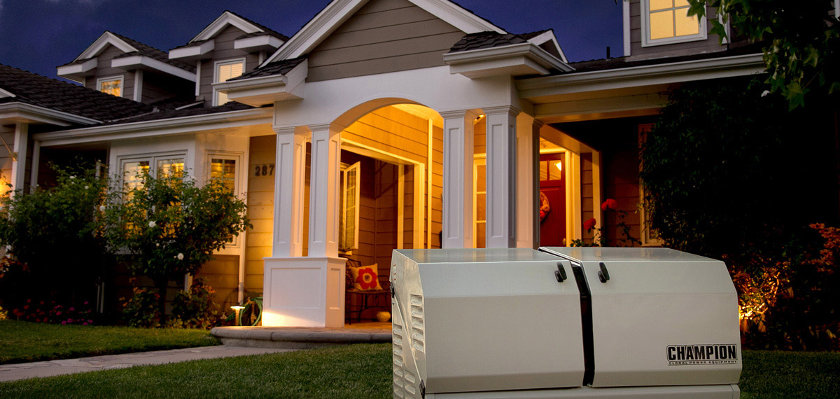
How far away can a standby generator be from the house?
Beyond the minimum distance requirements for safety, homeowners sometimes ask how far away from their home they can place their standby generator. There isn’t a strict maximum distance, but there are practical considerations to keep in mind.
The further away you place the generator from the house, the more you may encounter increased costs and potential energy losses. Here’s why:
Cabling and Wiring: Longer distances require more electrical wiring to connect the generator to the house. Not only can this be more expensive, but longer electrical runs might also mean a higher potential for energy loss.
Natural Gas Supply: If the generator runs on natural gas, placing it further from the home increases the cost of the gas line and the associated installation cost. Distance can also affect the delivery of gas to the generator and require larger lines. Long distance installations can impact generator performance.
Propane Supply: Moving the generator away from the home and closer to the propane tank could lower the fuel line cost and the installation cost. There are minimum distances set by local codes (varies all across the country) between the generator and the propane tank valve.
Maintenance Access: The generator should remain accessible for regular maintenance, repairs, and inspections. If you need maintenance in the winter and 3 feet of snow cover your yard, the service people will probably require you to shovel a path.
Signal Strength: Distance from the home can affect remote monitoring features if it uses wireless internet. Too far and the wireless access may not work or might require additional hardware to maintain access.
Ensure the generator is a safe distance from the home, windows, and other openings, and complies with local codes and manufacturer guidelines, but also positioned in a location that is cost-effective and efficient for its operation and maintenance. Always consult with your installer to determine the optimal distance based on your property’s layout and specific needs.
Install a Carbon Monoxide Detector on every floor of your home, especially near sleeping areas. When asleep, you won’t notice the symptoms of carbon monoxide poisoning. Carbon monoxide detectors should be a part of every home generator installation. At least one manufacturer makes proper installation of CO Detectors a requirement for installation.
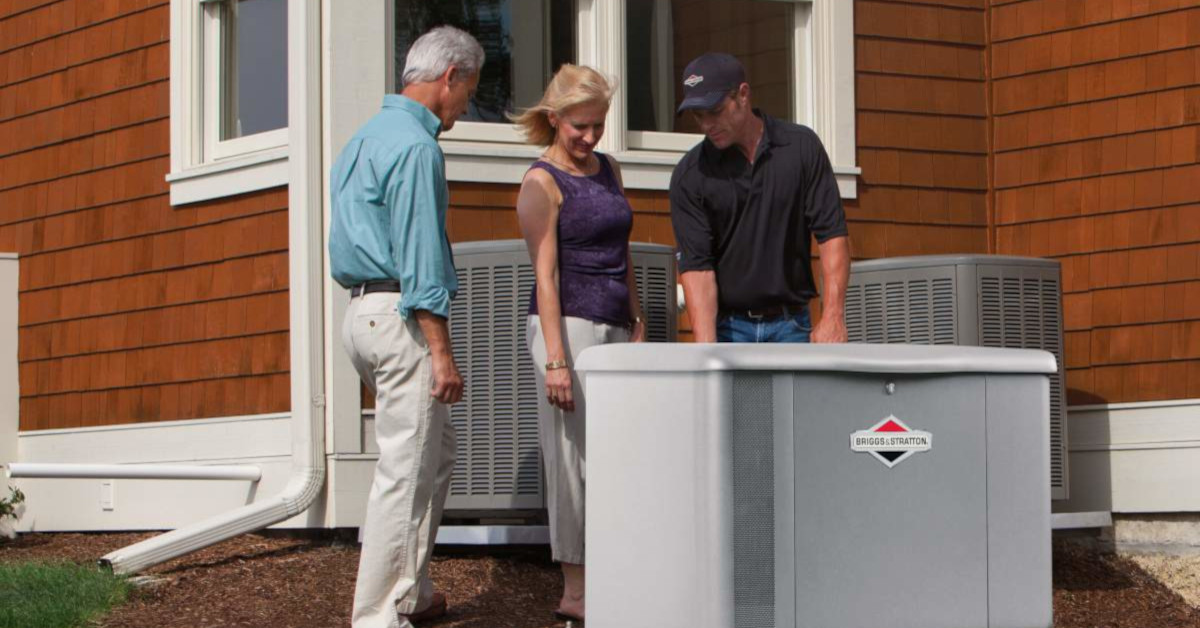
Where should a standby generator be located?
The optimal location for a standby generator provides for safety and efficient operation. Consider these factors to choose a location:
Safety Concerns: Locate the generator away from windows, vents, and doors to prevent the exhaust fumes, including carbon monoxide, from entering living spaces. Follow local building codes and manufacturer’s guidelines for specific distance requirements.
Accessibility: Regular maintenance helps maintain a generator warranty and extends its life. The location should allow easy access for technicians or the homeowner for routine checks, maintenance, and potential repairs.
Ground Elevation: Place the generator on elevated ground to prevent water accumulation around the unit. This measure helps avoid flooding and potential water damage. Install a raised generator platform that also allows for maintenance access if the potential for flooding exists.
Proximity to Fuel Supply: It is practical to position the standby generator near the gas supply to reduce installation costs and enhance fuel efficiency.
Noise Considerations: Modern generators make less noise than older models, but they produce some noise. Place the generator in a location where it’s least likely to disturb the household or neighbors. Barriers, such as walls, fences, and landscaping, can also help mitigate noise.
Ventilation: Generators require proper ventilation to prevent overheating. The chosen location should be open enough to ensure adequate airflow around the unit.
The ideal location for a standby generator balances safety, functionality, and aesthetics. Consult with your installer during the planning phase for insights tailored to the specifics of your property and needs.

